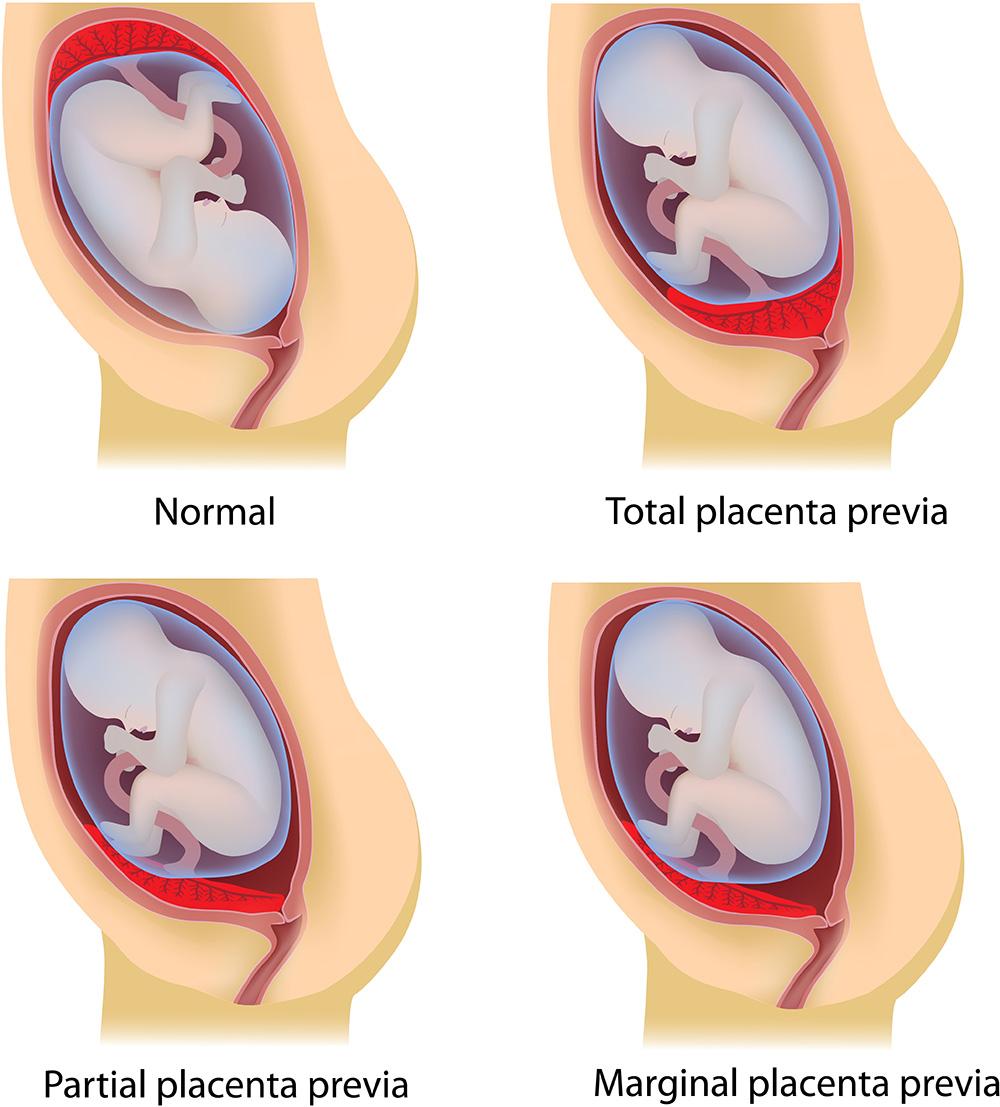Placenta Previa
by Stefanie Zinchiak M.Ed.
Medically Reviewed by Dr. Linda Lemay M.D.

What is Placenta Previa?
Placenta previa is a condition in which the placenta lies low in the uterus and partially or completely covers the cervix.
A placenta that starts off low in the uterus during early pregnancy (or even during the second trimester), will typically move to the top of the womb, so that the cervix is open for delivery in the third trimester.
Facts About Placenta Previa
- Placenta previa happens in approximately 1 in 200
- The more c-sections you have, the greater your risk of placenta previa.
- If you’ve had placenta previa in a past pregnancy, you have a 2 to 3 percent chance of having it again.
What Causes Placenta Previa?
The exact cause is unknown, but these factors may increase your risk:
- Age: If you’re 35 years of age or older.
- Drug Usage: If you smoke cigarettes or use cocaine.
- Multiples: If you’re pregnant with twins, triplets, etc.
- History: If you’ve been pregnant before, or if you’ve had any type of surgery on your uterus.
Types of Placenta Previa
Use the image to view a normal placement of the placenta within the womb, as well as three different types of placenta previa in which the cervix is partially or completely covered. These types of placenta previa are referred to as ‘marginal’, ‘partial’ and ‘total’.

How is Placenta Previa Diagnosed?
Your health care provider can diagnose and monitor this condition with a pregnancy ultrasound.
If you’ve been diagnosed with placenta previa in the first or second trimester- stay calm. There is a very good chance that the placenta will move on its own, making way for an open cervix, and vaginal birth.
Symptoms
The most common symptom is painless and sudden bleeding from the vagina, and usually starts near the end of the second trimester or beginning of the third trimester. For some women, bleeding may be accompanied by cramping.
Treatment of Placenta Previa
The vast majority of women with placenta previa, will need a C-section, as a vaginal delivery can cause severe bleeding, which is deadly to mom and baby. And while many women will also be put on bed rest to prevent early labor, if there is uncontrollable bleeding, an immediate C-section may be required.
Depending on the gestational age of the pregnancy, early delivery may be the best treatment option, while other situations may allow for the doctor to provide medication to help the baby’s lungs mature in preparation, prolonging birth.
A total (or complete) previa, as well as a partial previa will almost always require a C-section delivery, while some marginal previas can be delivered vaginally.
There are many factors that must be considered by your health care provider before determining a treatment plan.
Where to Go
With 3,613,647 babies born in 2020, choosing where to deliver your baby is an important decision. “New moms have many choices when it comes to having their baby, so choosing the best birthing experience is right up there with choosing the best doctor. We’ve made it easy for moms to vet out the hospitals that are proven to deliver an outstanding experience,” said Delia Passi founder and CEO of the Women’s Choice Award. The America’s Best Hospitals for Obstetrics have met the highest standards for Obstetrics across the U.S.
What to Ask Your Doctor:
Q: At which ultrasound will I be checked for placenta previa?
IF DIAGNOSED, ASK:
Q: Is there a chance it will resolve on its own?
Q: What is off-limits? (Exercise, intercourse, douching, etc.)
Q: How often will I be monitored?
Q: What type of placenta previa do I have, and what does that mean for my birth plan?
Q: What is my treatment plan and will this help me bring my pregnancy to term?
Q: What symptoms should alert me to seek medical attention?
Resources:
America’s Best Hospitals for Obstetrics
Know Where to Go, Know What to Do
This content is for informational purposes only and is not intended to provide medical advice or to treat, diagnose, cure or prevent any disease or condition. Always seek the advice of your healthcare provider.
Sources:
http://www.nlm.nih.gov/medlineplus/ency/article/000900.htm
http://americanpregnancy.org/pregnancy-complications/placenta-previa/
http://www.marchofdimes.org/pregnancy/placenta-previa.aspx
http://americanpregnancy.org/pregnancy-complications/placenta-previa/
